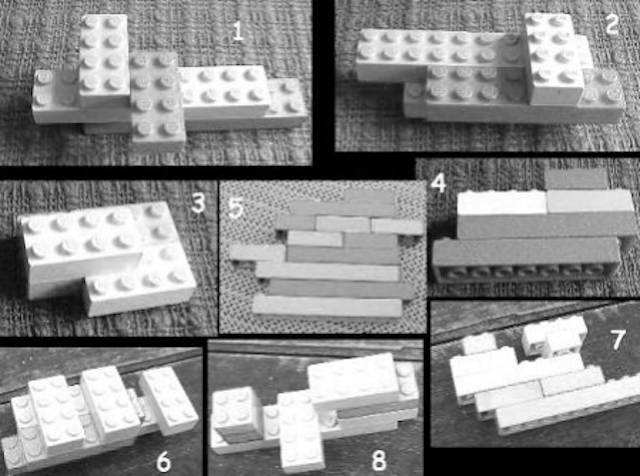It’s a tale as old as time: College co-eds get together on a Saturday night. Drinks are flowing. Hearts beat fast with excitement. The wall starts pounding with the steady thump-thump-thump of passion. You know, because some masters and doctoral students decided to see what happens when you toss a bunch of Lego bricks into a washing machine.
Ingo Althöfer, a student at Friedrich-Schiller University, became the mastermind behind “Random Structures from Lego Bricks and Analogue Monte Carlo Procedures,” which is undoubtedly the most delightful scientific paper you will read this year. Within an unnamed larger experimental series, he “put a whole bucket of old Lego(TM) bricks (from the late 1960’s and the early 1970’s) into our Miele(TM) washing machine,” to see how the tumbling would snap them together. Basically, it’s a version of a Monte Carlo simulation, which is a (normally) computerized algorithm that spits out risk by determining any given situation’s most likely outcomes.
Outlining his method, Althöfer explains how this Lego brick bath isn’t just fun, but useful:
The bricks were treated for 70 minutes, at 40 degree Celsius, without speed spinning at the end, without washing powder. At the start we had disintegrated all complexes. So, only isolated bricks were put in the machine. During the washing many “stable” complexes arose: most of them consisting of two bricks, but also others with up to six pieces in it. In many such complexes, plates of sizes 4×8 or 6×8 were involved.
The washing machine together with Lego bricks is a primitive analogue Monte Carlo agent. From the viewpoint of other disciplines it may also be viewed as:
* an experimental mechanism in the field of “Artificial Life.”
* a model of the Miller-Urey experiment on amino acid formation in primordial soup (Chemistry and Biology). See [2] for the description of such experiments.
* a system visualising aspects of entropy, decay, and spontaneous self-organisation (in Physics or Chemistry).
* a tool in a new branch of machine-assisted modern art.
And as this new experiment was clearly prime party fodder, Althöfer wasted no time in proposing a series of party experiments/games to his fellow academics. In the first, inexperienced Lego washers were asked to predict the resulting shapes. Every single one of them was wrong.

This is what actually happened:

And after that little bout of dissapointment, two biologists in the group proposed the only logical next step — Lego eugenics.
Concretely with Lego in a washing machine, generative design may be organised as follows. Each round consists of one washing run, followed by human selection of nice complexes in the yield. Before starting the next run, the human may create additional identical copies of the (relatively) nice complexes (for instance with additional bricks) and include them in the “pool”. This intervention simulates reproduction of fit species in a biological system. The hope is that in the next run (nice) mutants of these nice complexes will be generated. Again the player can select the nicest ones and replicate them.
But in the grand scheme of things, this little experiment in Lego has a larger goal than just shaking up Legos and breaking washing machines — it could bridge that great big transcontinental divide.
“Traditionally,” there is a difference between Europe and the United States in acceptance of Lego as a useful and serious tool in education. Hopefully, our experiments will help to close the gap between unprejudiced “Yankees” and conservative Europeans.
Certainly seems like they’re off to a good start. [Ingo Althöfer via PopSci]
Image: Shutterstock /hxdbzxy
